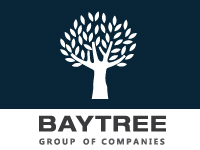CA
ON
놀부 - 한식/일식/중식
전화: 416-221-4700
3 Elmhurst Ave, North York, ON

홍이표치과
전화: 647-985-0456
9625 Yonge St #4, Richmond Hill, ON Toronto, ON
1.jfif)
싸인건설
전화: 416-909-7070
4065 Chesswood Dr. North York, ON
0.jfif)
호남향우회 (토론토)
전화: 647-981-0404
7 Bishop Ave. #2411 Toronto, ON

대형스크린,LED싸인 & 간판 - 대신전광판
전화: 416-909-7070
4065 Chesswood Drive Toronto, ON

조준상 (로열르페이지 한인부동산 대표)
전화: 416-449-7600
1993 Leslie St. Toronto, ON

최고의 POS시스템 - 스마트 디지탈 POS
전화: 416-909-7070
4065 CHESSWOOD DR. NORTH YORK Toronto, ON
0.jfif)
한인을 위한 KOREAN JOB BANK
전화: 6476245886
4065 Chesswood Drive Toronto, ON
.jpg)
토론토 기쁨이 충만한 교회
전화: 416-663-9191
1100 Petrolia Rd Toronto, ON

스마트 디지탈 프린팅 - 인쇄 및 디자인
전화: 416-909-7070
4065 chesswood dr. Toronto, ON
.jfif)
준비된 바이어 그룹 , BAYTREE 이너써클
전화: 416-226-5999
7030 Woodbine Ave. Suite 103 Toronto, ON

K-포차 ...미시사가(만두향프라자)
전화: 905-824-2141
169 DUNDAS ST. E. #7 Mississauga, ON

블로그 ( 오늘 방문자 수: 45 전체: 127,219 )
What are trans fats?
kciha
2004-08-26
Trans Fatty Quiz
Trans fats have been in the news a lot recently. Have you retained the important facts? Test and refresh your knowledge with our Trans Fatty Quiz. We've thrown in some bonus questions on cholesterol as well (the answers appear below).
Trans Fatty Quiz
What are trans fats?
What is hydrogenation?
What foods contain trans fats?
Why don't I see information on trans fats on all product labels?
What are the health reasons for avoiding trans fats?
Why do trans fats appear so commonly in food?
How can I avoid trans fats?
Bonus questions
Explain the two types of cholesterol.
What is the interplay of trans fats with cholesterol?
Why should I be concerned about high blood cholesterol?
Answers
1. Trans fats, sometimes referred to as trans fatty acids, are formed when vegetable and other liquid oils are processed by food manufacturers and made solid or into a more solid liquid (think of hard margarines or shortening). While the majority of trans fats appear in processed food, trans fats may also appear naturally in low quantities in some dairy and meat products.
2. Hydrogenation is the process by which liquid oils are made more solid. In more scientific terms, hydrogenation is the process by which unsaturated fat is processed to become more saturated - which helps to increase the shelf life of processed foods, but can be detrimental to your health. Unsaturated fats are thought to decrease cholesterol levels in your blood and are found at high levels in vegetable oils (olive oil, canola, etc.) As a general rule, at room temperature, unsaturated fats are liquid. So what's wrong with saturated fat? Saturated fat poses the highest risk for the development of atherosclerosis (hardening and narrowing of the arteries) and ensuing cardiovascular problems.
3. As mentioned in Answer #1, trans fats appear primarily in processed foods. These foods include commercially baked goods (e.g., crackers, cookies, cakes), fried foods (e.g., chips, french fries), hard margarines, and shortening. And be aware of fried foods in restaurants because these often contain added trans fats (as restaurants often use margarines and shortenings to prepare food). Naturally occurring trans fats appear in some meats and dairy products.
4. At the start of 2003, Canadian food manufacturers were given three years to develop and provide information on trans fat content on all labels. (smaller businesses were given five years to comply.) After this time period, Canadian food labels will all reflect trans fat content.
5. Consuming large amounts of trans fats increases the risk of cardiovascular disease. With the widespread appearance of trans fats in (and other fats) our diet, the average North American currently eats approximately five times the recommended daily allowance of bad dietary fats, including trans fats.
6. Food manufacturers use hydrogenated oils to add shelf life to their products (think of packaged cookies and crackers which last a long time) and often add a "better" texture to the food (such as flakier pie shells, or a more spreadable dip or topping). At present, some food manufacturers are working to eliminate trans fats from their recipes and offer healthier products.
7. Inform yourself! Remember that processed and fried foods should be avoided. Use liquid (not solid) oils to cook foods at home (such as olive, canola, or corn oils). And as always, choose fresh, low-fat food for your meals.
Bonus answers
8. There are two types of cholesterol found in your blood. The "bad" cholesterol is called low density lipoprotein (LDL). While certain levels of LDL are required for cell production and cell repair, too much LDL can spell trouble in the form of cardiovascular disease. The other type of cholesterol is the "good" cholesterol - high density lipoprotein (HDL). HDL helps remove extra LDL from our blood vessels and can help protect against hardening of the arteries.
9. Studies show that trans fats contribute to increases of blood LDL cholesterol (the "bad" cholesterol). In addition, some studies also show that trans fats may decrease the levels of "good" cholesterol - HDL cholesterol.
10. As mentioned in Answer #8, high levels of blood cholesterol (LDL) present an increased risk for developing cardiovascular disease.
So, how'd you fare?
0 to 3 correct answers: Good for you for taking the time to learn more about trans fats! We hope you've gained some knowledge.
4 to 7 correct answers: You're on the road to being a "trans fatty expert."
8 to 10 correct answers: You know how to avoid trans fats, but that's only half the battle - we hope you put it into practice!